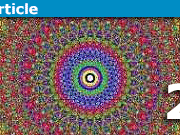What is a Real Number? A 5 Minute Introduction
Table of Contents
Definition of real numbers
Real numbers are a comprehensive set of numbers that encompasses all possible values on the number line. They include both rational and irrational numbers and are typically denoted by the symbol ℝ. Real numbers can be positive, negative, or zero, and they can be represented as finite decimals, recurring decimals, or infinite decimals.
Here are some key characteristics of real numbers:
- Positive Real Numbers: These are real numbers greater than zero, such as 1, 2, 3.5, and so on.
- Negative Real Numbers: These are real numbers less than zero, such as -1, -2.7, -0.5, and so on.
- Zero: Zero (0) is also considered a real number.
- Rational Numbers: Rational numbers are real numbers that can be expressed as the quotient or fraction of two integers, where the denominator is not zero. For example, 1/2, -3/4, and 5 are rational numbers.
- Irrational Numbers: Irrational numbers are real numbers that cannot be expressed as a simple fraction. They have non-repeating, non-terminating decimal expansions. Examples include the square root of 2 (√2), pi (π), and the number e.
- Density: The real numbers are densely packed on the number line, meaning that between any two real numbers, there are infinitely many other real numbers. This property makes real numbers suitable for representing continuous quantities in mathematics and science.
Real numbers are a fundamental concept in mathematics and are used extensively in various mathematical and scientific disciplines to describe and quantify quantities, measurements, and relationships.
Extended explanation
This is a preliminary article. More information will be added in the future.
A Brief History
The real numbers originate from a need to quantify the geometric notion of ‘length’. It was known in ancient times that rational numbers are not adequate, culminating with Eudoxus’s ‘method of exhaustion.
Formal Definition
With the development of modern calculus, it became increasingly clear that a rigorous definition of real numbers was required. Cantor provided the first definition, by identifying a real number with the set of Cauchy sequences of rational that ought to converge to that real number. Since then, many other equivalent definitions have been provided. The following definition is the one traditionally used today, except that the Dedekind completeness axiom has been replaced with an equivalent axiom:
Language
The real numbers consist of:
A set [itex]\mathbb{R}[/itex] whose elements are called real numbers (also written R)
A distinguished real number [itex]0[/itex] (zero)
A distinguished real number [itex]1[/itex] (one)
A binary operation [itex]+[/itex] (addition)
A binary operation [itex]\cdot[/itex] (multiplication)
A unary operation [itex]-[/itex] (negation)
A unary partial operation [itex]{}^{-1}[/itex] (reciprocal)
A relation [itex]\leq[/itex] (less than or equal to)
In what follows, the symbols [itex]a, b, c[/itex] denote real numbers, [itex]d[/itex] denotes a nonzero real number (meaning [itex]d \neq 0[/itex]).
Field Axioms
[itex]a+b[/itex] is a real number
[itex]a \cdot b[/itex] is a real number
[itex]-a[/itex] is a real number
[itex]d^{-1}[/itex] is a real number
[itex]a+b = b+a[/itex] (commutativity of addition)
[itex]a \cdot b = b \cdot a[/itex] (commutativity of multiplication)
[itex]a+(b+c) = (a+b)+c[/itex] (associativity of addition)
[itex]a\cdot (b\cdot c) = (a\cdot b)\cdot c[/itex] (associativity of multiplication)
[itex]a\cdot (b+c) = (a\cdot b) + (a \cdot c)[/itex] (distributivity of multiplication over addition)
[itex]a + 0 = a[/itex] (0 is the additive identity)
[itex]a \cdot 1 = a[/itex] (1 is the multiplicative identity)
[itex]a + (-a) = 0[/itex] (additive inverses)
[itex]d \cdot (d^{-1}) = 1[/itex] (multiplicative inverses)
Ordering axioms
If [itex]a \leq b[/itex] and [itex]b \leq a[/itex] then [itex]a = b[/itex]
If [itex]a \leq b[/itex] and [itex]b \leq c[/itex] then [itex]a \leq c[/itex]
[itex]a \leq b[/itex] or [itex]b \leq a[/itex]
If [itex]a \leq b[/itex] then [itex]a + c \leq b + c[/itex]
If [itex]0 \leq c[/itex] and [itex]a \leq b[/itex] then [itex]a \cdot c \leq b \cdot c[/itex]
Completeness axiom
The completeness axiom is significantly more complicated. One way to state it is via the least upper bound property of the calculus of sequences. Let [itex]\{ f_n \}[/itex] be a sequence of real numbers
If [itex]f_n \leq f_{n+1} \leq a[/itex] for every natural number [itex]n[/itex], then [itex]\lim_{n \rightarrow +\infty} f_n[/itex] exists
Other Operations and Identities
These axioms are sufficient to derive all of the familiar properties of the real numbers. Some examples:
Subtraction is defined by [itex]a – b = a + (-b)[/itex]
Division is defined by [itex]a / d = a \cdot (d^{-1})[/itex]
Common Errors
The word “real” in “the real numbers” is often mistaken for the ordinary English word. In actuality, it is simply a name, and is used to distinguish the number system from other familiar systems like “the integers” or “the rational numbers” or “the Galois field of 49 elements”.
Extra
This article was authored by several Physics Forums members with PhDs in physics or mathematics.










Leave a Reply
Want to join the discussion?Feel free to contribute!